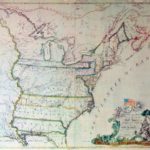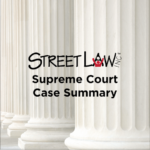Students will be able to identify and explain aspects of the election regulation debate, including its potential impact on voter turnout, election transparency, and voting equity.
The Constitution in Action: Strict vs. Loose Construction
History is the chronicle of choices made by actors/agents/protagonists in specific contexts. This simulation places students in the Early Republic and asks them to engage with questions of Constitutional interpretation faced by President Washington and the First Federal Congress. Did the Constitution empower Congress to charter a national bank? Finance and maintain lighthouses? Regulate working conditions of merchant seamen? Support higher education?
Act III: How Did the Constitutional Convention Work Out the Details of Government?
This short video examines the role played by the Committee on Detail in defining the powers of Congress, the most important of which were the power to tax and the power to regulate commerce. The Committee wanted to promote an interstate commercial republic and specified congressional powers to achieve that goal. According to Professor Gordon Lloyd, the inclusion of the “necessary and proper clause” was the most significant contribution of this Committee.
Dept. of Health and Human Services v. Florida—The Health Care Case (2012)
Does the individual mandate of the Affordable Care Act exceed the constitutional power of the federal government to regulate commerce? This case summary shows how the Supreme Court answered that question in 2012.
Massachusetts v. EPA (2007)
Are states, cities, or environmental groups legally able to challenge the EPA’s decision not to regulate greenhouse emissions in federal court? This case summary shows how the Supreme Court answered that question in 2007.
McDonald v. City of Chicago (2010)
Does the right “to keep and bear arms” apply to state and local governments and thus limit Chicago’s ability to regulate guns? This case summary shows how the Supreme Court answered that question in 2010.
Shelby County v. Holder (2013)
States, Slavery, and the Constitution

This short video assesses sectional differences at the Convention about slavery. New England delegates saw slavery as a moral issue beyond the scope of their deliberations; representatives from the Middle States were generally opposed to slavery on moral and economic grounds; and Southerners were insistent on protection for both slavery and the slave trade. Professor John Kaminski analyzes how the conflict was resolved by denying Congress any power to regulate the trade until 1808.
